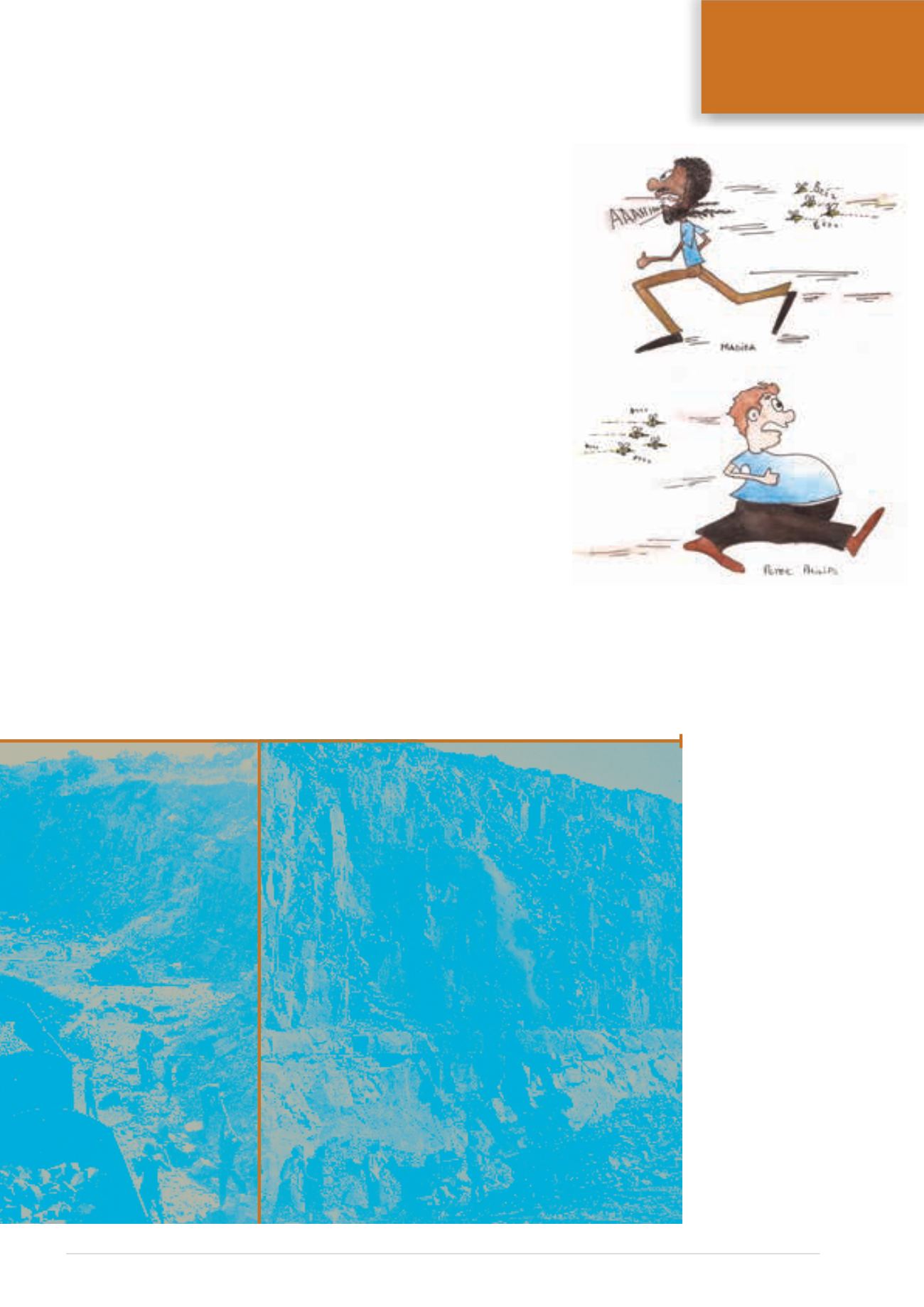
January - February 2014
MODERN QUARRYING
13
FACE TO FACE
14:00 to 22:00. We had paraffin lamps hanging on
long bamboo poles in the quarry for light. When
you stood on top of the quarry after dark looking
down, it was like scene from a previous century.”
He says the 110’ high quarry face was drilled
with jackhammers, 9,0’ at a time. The holes were
then charged with dynamite and blasted. After
every blast, the face would be 9,0’ lower and the
only way up or down onto the face was with a rope
which was anchored to the top. “I would light the
five-minute delay safety fuse and scramble up the
rope with great speed – this was pretty nerve-
wracking stuff.
“After the blast, we had to climb down onto
the face again to clear the blasted rock and redrill
the face. After each successive blast, you had an
extra 9,0’ to climb. You ended up climbing down
110’ when the face was worked down to the bot-
tom, with only a single hessian rope and no safety
harness!”
All materials, explosives and jackhammers had
to be lowered onto the face with these hessian
ropes, which was the lifeline of the quarry. “I had
welts the size of peas on my hands from climbing
up and down the face with this rope,”Henry recalls.
“No safety harnesses were used and the only safety
was the strength of your hands and arms and your
climbing ability. Before a blast, all the ngolovan
trucks had to be removed to prevent damage to
them; this was hard work. I can still hear the men
Far left:
Ngolovans being
loaded by hand. Note the driller
in the background. Drillers were
regarded as elite and earned the
best money.
Centre:
Railway trucks being
loaded by hand with two
different sizes of handstone.
These trucks were shunted by
a diesel Hunslet loco. In the
background one can see the
gangplanks that enables the
wheelbarrows to be pushed onto
the truck and tipped.
Left:
Baring down whilst people
are working below. One can see
the hessian ropes used to climb
up and down the faces.
singing their working songs when carrying
these rails out. It sounded so good in
the confined space of the quarry,
especially at night.
“There were fun times too.
We kept donkeys, goats, pigs and
beehives on the property,” he tells
MQ
. “Part of my job was to look after
some of the farming activities such as
ploughing, the planting of cabbages and
feeding the pigs.
“The engineer at Coedmore at
that time was Pieter Phillips and he also
looked after the Effingham operation.
He had one of the biggest stom-
achs I have ever seen. One day,
Norman Wright, the owner and
manager, asked Pieter to remove
the honey from the beehives.”
Henry, who has an allergic reaction to
beestings, watched this saga
from inside the safety of his
old Fiat. He recalls: “Madiba,
a tall thin long-bearded man from Mozambique,
was helping Pieter. The bees started stinging and
Madiba took cover in an empty hessian grain bag.
Unfortunately the bees had got into this bag and
were still streaming in from the bottom. It looked
like a lion caught in the bag, trying to get out as he
was swatting bees. Eventually he decided to make
Comic book characters: a hasty
Madiba with split beard running
in one direction, with a back-
arched Peter Phillips running in
the other.


